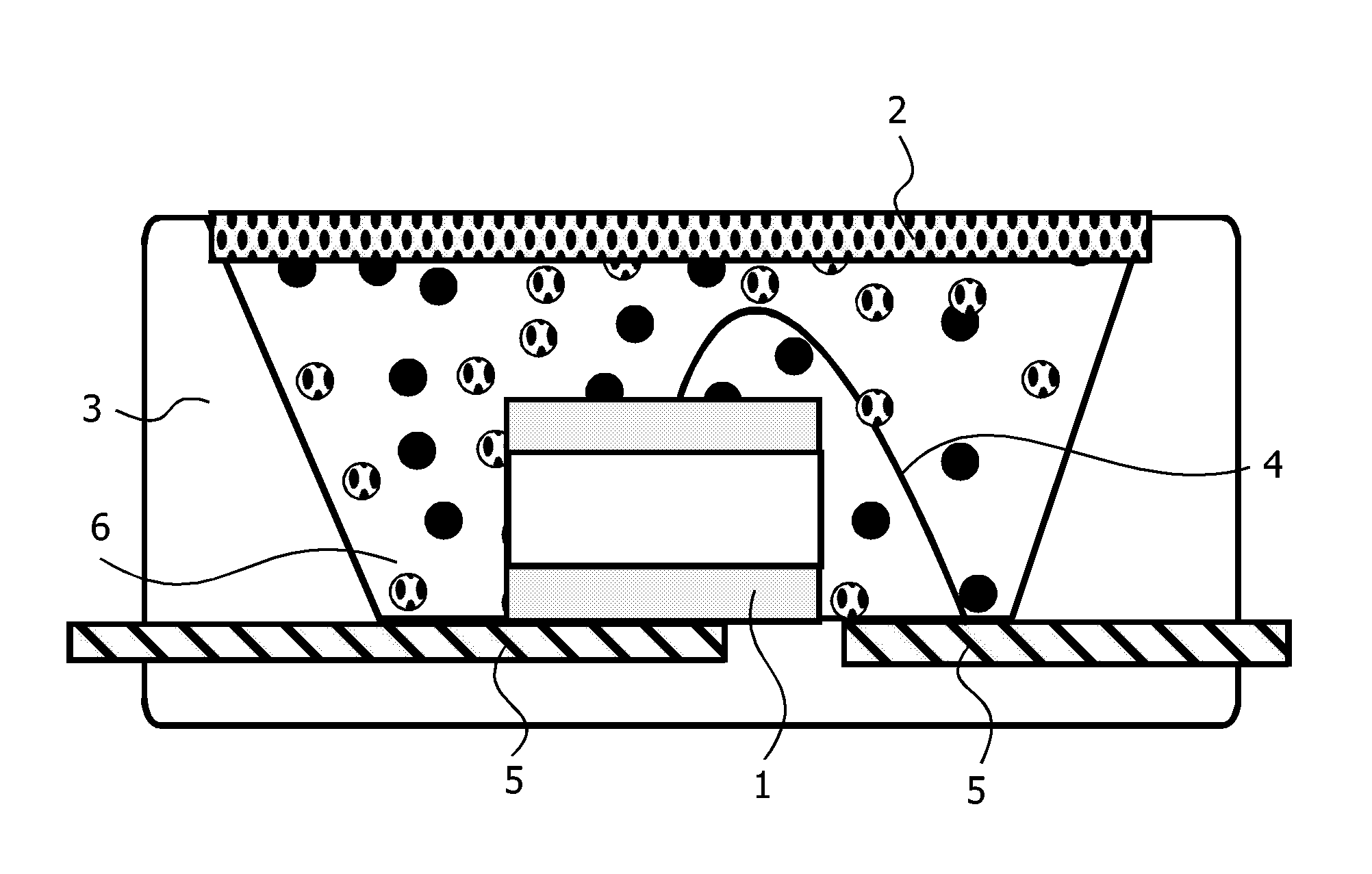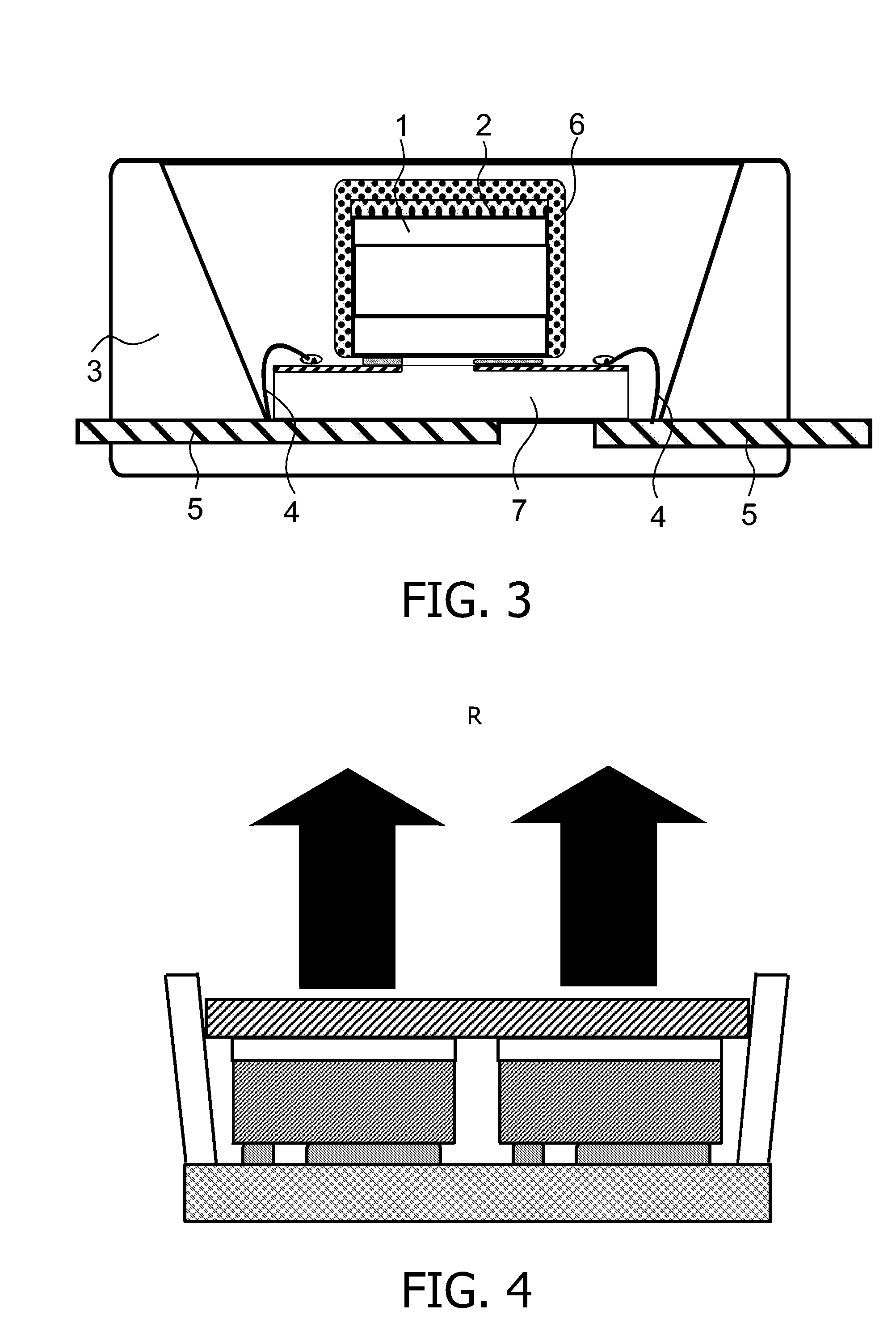Illumination System Comprising a Ceramic Luminescence Converter
a luminescence converter and ceramic technology, applied in the direction of solid-state devices, discharge tube/lamp details, inorganic chemistry, etc., can solve the problems of difficult to produce uniform emission characteristics from batch to batch, low yield of conventional visible colored light emitting leds, etc., to achieve the effect of long-lasting and durabl
- Summary
- Abstract
- Description
- Claims
- Application Information
AI Technical Summary
Benefits of technology
Problems solved by technology
Method used
Image
Examples
first embodiment
[0099]In a white-light emitting illumination system according to the invention the device can advantageously be produced by choosing the luminescent material of the monolithic ceramic luminescence converter such that a blue radiation emitted by a blue light emitting diode is converted into complementary wavelength ranges in the amber range, to form dichromatic white light, as shown in FIG. 10.
[0100]Particularly good results are achieved with a blue-emitting LED whose emission maximum lies at 420 to 480 nm. An optimum has been found to lie at 455 nm, taking particular account of the excitation spectrum of the activated earth alkaline sulfides according to the invention.
[0101]Amber light is produced by means of the phosphor material of the monolithic ceramic luminescence converter, that comprises an alkaline earth metal sulfide of general formula AE1-zS1-ySey:Az, wherein AE is as least one earth alkaline metal selected from the group of Mg, Ca, Sr and Ba, 0≦y<1 and 0.0005≦z≦0.2, activ...
second embodiment
[0104]In a second embodiment yielding white light emission with even higher color rendering is provided by using a blue-emitting LED, an amber and red emitting monolithic ceramic luminescence converter comprising an activated earth alkaline sulfide together with a second luminescence converter, preferably a green broad band emitter
[0105]Such second luminescence converter may be either provided as a phosphor pigment admixed in a resin bonded encapsulation layer or as a second monolithic ceramic luminescence converter as shown in FIG. 11.
[0106]Useful second luminescence converters and their optical properties are summarized in the following table 2.
TABLE 2Compositionλmax [nm]Color point x, y(Ba1−xSrx)2SiO4:Eu5230.272, 0.640SrGa2S4:Eu5350.270, 0.686SrSi2N2O2:Eu5410.356, 0.606SrS:Eu6100.627, 0.372(Sr1−x−yCaxBay)2Si5N8:Eu6150.615, 0.384(Sr1−x−yCaxBay)2Si5−aAlaN8−aOa:Eu615-650*CaS:Eu6550.700, 0.303(Sr1−xCax)S:Eu610-655**color point depending on the value of x
[0107]For improved color rendi...
PUM
| Property | Measurement | Unit |
|---|---|---|
| wavelengths | aaaaa | aaaaa |
| wavelengths | aaaaa | aaaaa |
| temperature | aaaaa | aaaaa |
Abstract
Description
Claims
Application Information
 Login to View More
Login to View More - R&D
- Intellectual Property
- Life Sciences
- Materials
- Tech Scout
- Unparalleled Data Quality
- Higher Quality Content
- 60% Fewer Hallucinations
Browse by: Latest US Patents, China's latest patents, Technical Efficacy Thesaurus, Application Domain, Technology Topic, Popular Technical Reports.
© 2025 PatSnap. All rights reserved.Legal|Privacy policy|Modern Slavery Act Transparency Statement|Sitemap|About US| Contact US: help@patsnap.com



